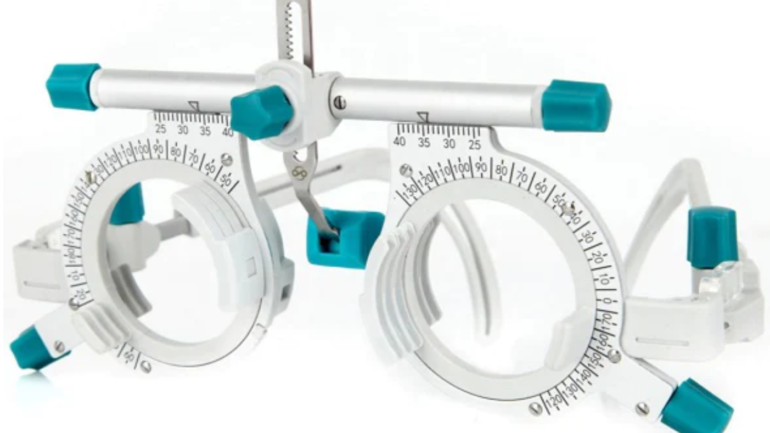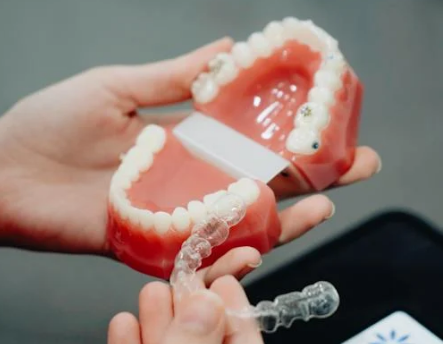If you are soon to start life as an optometry student or have already commenced your optometry studies, you will appreciate the hard work needed to complete the 4 year course to become a registered optometrist. There is plenty of advice out there to help you manage your studies, including organising your time and preparing for exams, but if you just need some guidance on the equipment you’ll be using then you have come to the right place, as we’re about to review trial frames, their uses and importance, to help ensure you have the right tools to complete your studies effectively.
What are trial frames?
Trial frames are an essential optometry tool used to conduct eye examinations and determine a patient’s precise prescription for corrective lenses. They are adjustable frames that allow optometrists to accurately position and test different lenses in front of a patient’s eyes. Their core uses include:
- Refractive error measurement – the frames enable optometrists to systematically test different lens powers and types to identify the optimal prescription that corrects the patient’s refractive errors, such as nearsightedness, farsightedness, and astigmatism.
- Binocular vision assessment – by placing lenses in the trial frame, optometrists can evaluate the patient’s binocular vision, including aspects like eye coordination, depth perception, and convergence.
- Customised lens selection – the adjustability of these frames allows optometrists to fine-tune the positioning and parameters of lenses to ensure a precise, personalised fit for each patient’s visual needs and facial features.
- Patient education – using the trial frame, optometrists can demonstrate the effects of different lens powers and types to patients, helping them understand their vision correction options.
Why do optometry students need to use a trial frame?
Proficiency in trial frame usage is a core competency for optometry students, as it is a fundamental skill required for conducting comprehensive eye examinations and providing effective vision care. Students of optometry will need plenty of practice with a trial frame to make sure that they understand its purpose and can use it correctly, this will include:
- Adjustability and customisation – optometry students need to understand how to properly adjust the various components of trial frames, such as the pupillary distance (PD), vertex distance, axis, and temple length. This knowledge will allow them to precisely position the lenses in front of the patient’s eyes to accurately measure refractive errors and binocular vision.
- Compatibility with accessories – students should be familiar with the compatibility of frames with various accessories, such as polarising filters, occluders, and near vision targets.
- Ergonomics and patient comfort – students should understand the importance of trial frame ergonomics and how design features like adjustable nose pads, flexible temples, and lightweight materials can contribute to patient comfort and acceptance. This will be particularly important when treating patients with additional physical, sensory, or mental disabilities.
- Maintenance and hygiene – optometry students need to know how to properly clean and maintain their frames to ensure they remain in good working condition and meet infection control standards, particularly when used for multiple patients.
- Specialised trial frames – it is also important that students are aware of specialised trial frame models, such as those designed for children or those with a reduced PD range, and understand when to use them appropriately.
Through getting practical experience of trial frame usage, optometry students can develop the skills needed to carry out comprehensive eye examinations, provide personalised vision care, and ensure a positive experience for their future patients.
Are Oculus trial frames best for students?
In your studies or initial research, you may have already come across Oculus as an important brand in the optical equipment industry, and rightly so. Oculus trial frames are high quality frames, designed with versatility and ergonomics in mind and which enable optometrists to effectively conduct comprehensive eye examinations and refractive testing. Oculus frames are often recommended to students as they offer many benefits including:
- Adjustability and flexibility – the frames offer a wide PD (pupillary distance) range, typically from 40-80mm, allowing them to accommodate patients of all ages, including children.
- Designed with user experience in mind – Oculus frames feature a self-braking mechanism for the bridge adjustment, user-friendly operating elements, and an anatomically designed temple design to minimise pressure and discomfort. The closed side extension also helps prevent the patient’s hair from getting caught.
- Compatibility – these frames are compatible with a range of trial lenses and accessories, such as polarising filters, making them a versatile and comprehensive solution for optometric practices.
- Visually appealing and reassuring – Oculus trial frames are not only functional but also visually appealing, with a modern and colourful design that can help put patients at ease, especially children. eye
Now that you know a little more about trial frames, their usage and their importance to those studying optometry, it’s time to find your own frames. Bondeye Students offers a one-stop-shop for optical equipment for students, including Oculus trial frames and a wide range of other optometry supplies, so this is a good place to start your search and support your studies. Good luck!



